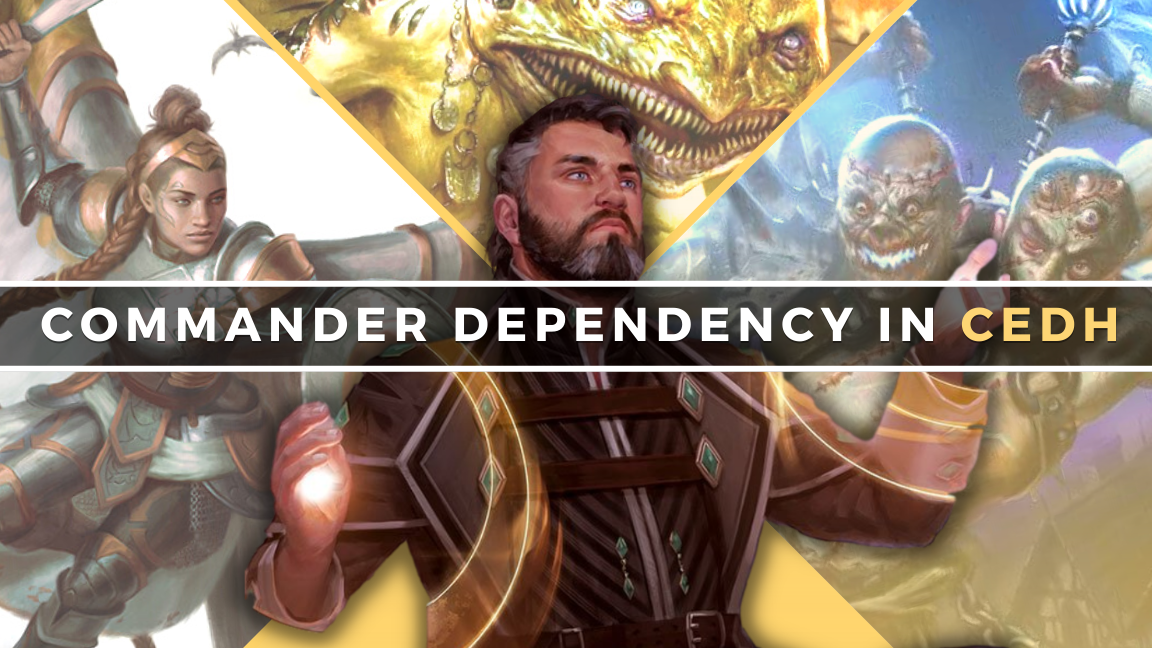Commander Dependency in cEDH

Drannith Magistrate by Kieran Yanner
Picking a commander is among the most consequential choices any of us will make when building a new deck. Not only does this decision immediately restrict the cardpool from which all other options will be selected, but so too does it immediately narrow down the near-infinitely branching decision tree that is game-strategy to a much more manageable shrub of possibilities. While this limitation (and the creativity which it breeds) should come as no surprise to us, it does bring with it an oft-undiscussed, yet incredibly consequential, trap which many of us may fall victim to: the problem of commander dependence.
Beyond setting color identity, just about every cEDH deck out there follows one of two paths when it comes to incorporating the commander: they will either serve as a some sort of value piece, increasing the overall performance of the deck while in play but without being a crux of the strategy, or they will serve as a linchpin in the deck's functionality, a key component without which the fundamental mechanisms in the strategy fall apart or are severely limited. While plenty of viable strategies exist across this spectrum, straying too far to either end brings significant repercussions. Let's look at some examples.
Value Engines and Commander Independence
First up is everybody's favourite four-color pile, Blue Farm. Leaning hard in the direction of commanders as value pieces, both Tymna the Weaver
Blue Farm is the among the highest echelons of commander-independence, beaten out just barely by the near-commanderless lists, such as RogSi. By relegating the win conditions to the 99 (or, in this case, 98) itself, Blue Farm is able to shift the pressure of action away from deploying its commanders and towards being a proactive force within the game. This isn't to say that the deck chose these commanders purely for the color identity and then discards them to the fate of never being cast; each is a very strong presence while in play. However, when it came to constructing the deck list itself, Blue Farm is notoriously resilient because locking it out of casting its partners doesn't lock the deck out of victory.
The primary problem with this sort of commander independence, however, is that it represents a legitimate opportunity cost: by choosing commanders which don't directly facilitate win attempts in and of themselves (I'm looking at you, Shalai and Hallar
One-Card Combos and Commander Dependence
This brings us to the more commander-centric decklists; those which, while not entirely commander-dependent, certainly have win probabilities closer tied to the deployment of their commanders. Decklists of this sort certainly can win without their commanders (Ad Nauseam
The Space Between
Finally, we come to the middle of the road: those commanders who play an outsized role in the deck's overall performance, occasionally creating combos in the process, but who also facilitate strategies which can operate, albeit less optimally, without them. Let's check out two examples for this one; that way we can highlight the variance which this pack is capable of.
First, the wonderfully chaotic Krarkashima. No other commander or Partner pair does quite what these two do. Absurd storm turns, games being decided by the flip of a coin, enough nondeterminism to make a Four-Horsemen player proud, Krarkashima is a truly unique deck from amongst the rest of the cEDH crowd. That being said, it can win without a thumbless Goblin anywhere on the board. Nestled within all that variance is a semi-traditional storm package (and occasionally a Breach line, too) backed up by all the interaction necessary to make it a true force to be reckoned with. The result? Nearly two decks in one, both forks off of the same central strategy. Should a Drannith Magistrate
Next up, our far more deterministic decklist: Tivit, Seller of Secrets
Linearity and Dependence
Every deck as a central plan which it seeks to execute. The degree to which that plan is fixed - i.e, any deviations from it will lead to a loss in win probability - is a measure of that deck's linearity. This can be as strict as "I will strive towards no less than five mana by turn two, at which point I will expend all resources necessary to resolve an Ad Nauseam
I bring this up because, throughout our example lists, a noticeable trend has emerged: linearity and dependency run in tandem. In the case of commander-centric lists, like Shalai and Hallar
Understanding this overlap is an excellent opportunity to take even the most commander-centric decks and evaluate their dependency metric. While linearity may lead to reliability in strategy, its opportunity cost comes at the expense of flexibility. Similarly, while commander dependency may bring with it the reward of explosivity, it frequently comes at the cost of resiliency. Of course, not all decklists are the same, and each strategy will find that these tradeoffs have different merits, but I think we all can agree that no one wants to pilot a deck that is unplayable with a creature as ubiquitous as Drannith Magistrate
Wrap Up
While commander-centric lists continue to perform well, understanding the inherent weakness which comes alongside reliance on such a public and telegraphed decision is something which we all need to spare some time doing before we sit down and construct our lists. Ask yourself: how much do I need my commander? It may seem a little counterintuitive at first, but maximizing the command zone can be done without relying on it. Your win rates just might thank you for it.